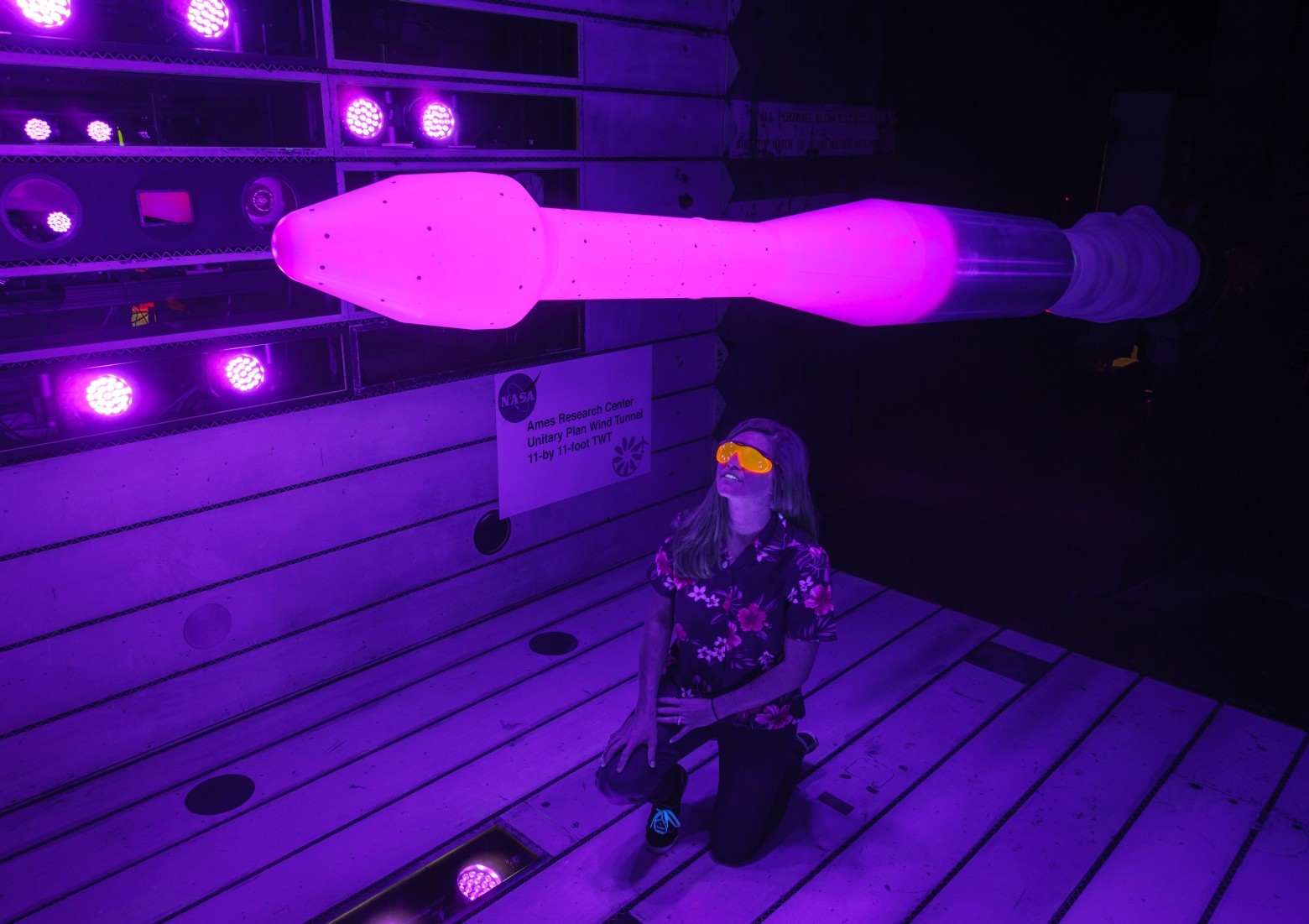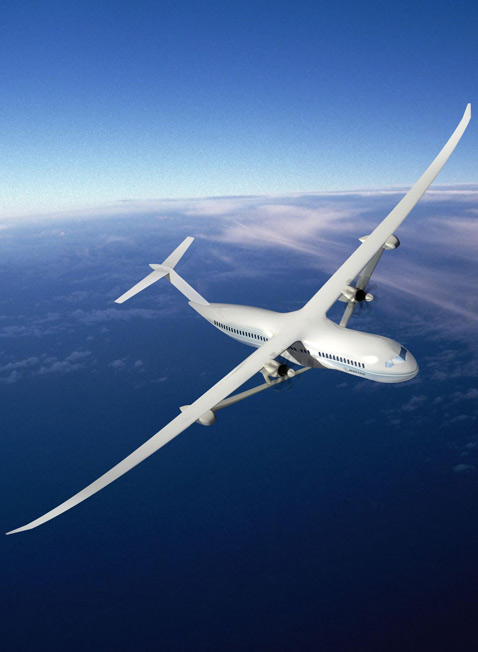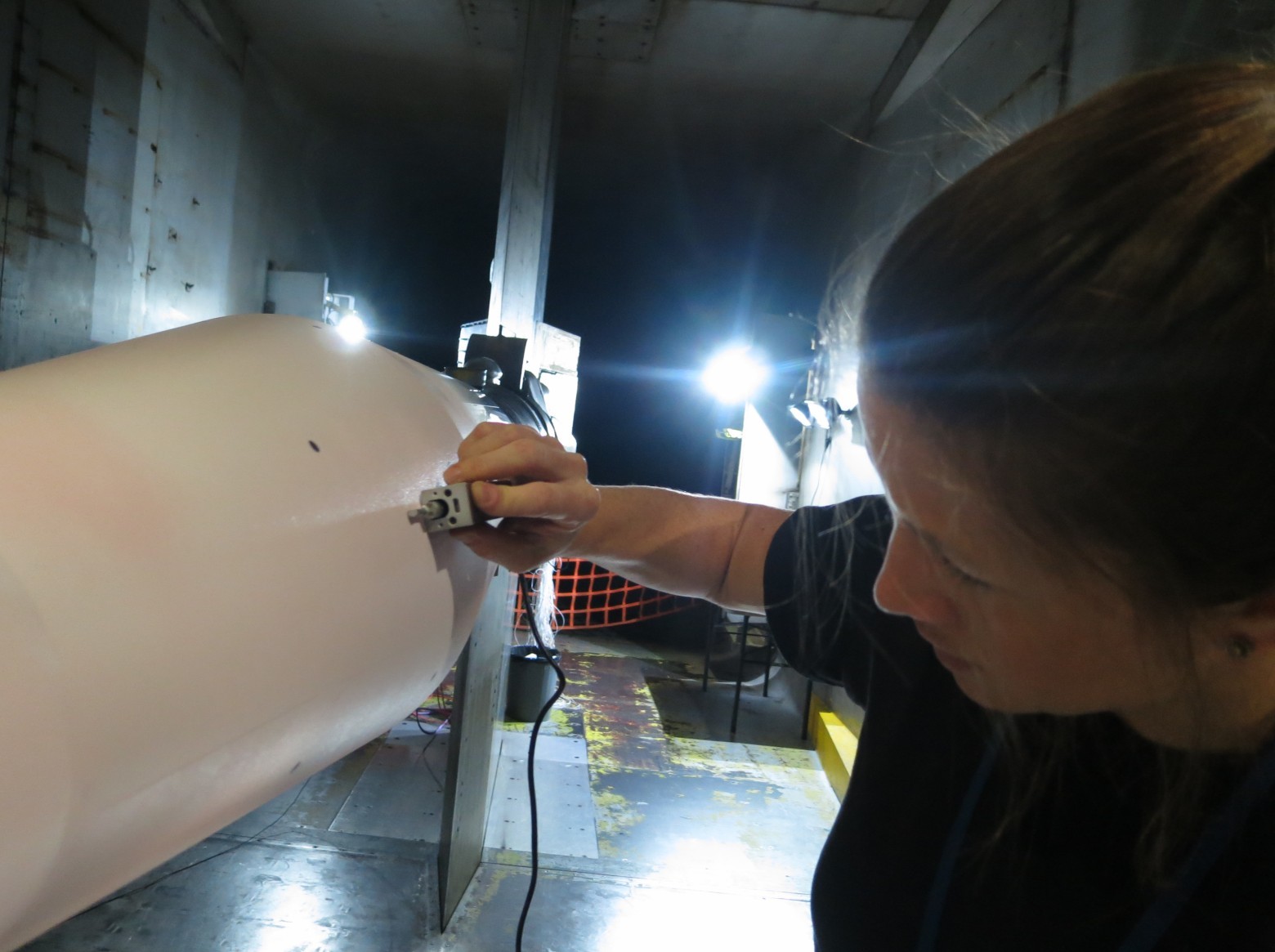New paint from chemists from NASA will help the rocket SLS withstand the buffering

A NASA engineer Nettie Roozeboom is testing a booster model painted with pressure-sensitive paint that glows blue. The model is fixed in the wind tunnel of the NASA Ames Research Center in California
For more than 25 years, NASA has been using Pressure-Sensitive Paint (PSP) pressure-sensitive paint to test models in a wind tunnel. With the help of this bright pink paint, engineers collect information on air pressure into individual structural elements. The distribution of pressure on the body during movement in the air is extremely important information, it is often impossible to obtain it in any other way, only with the help of the PSP.
In former times, the pressure on the case of the model was measured using measuring microphones and special fittings that were screwed in through small holes in key parts of the case where readings should be taken. The problem was that inside the model there was sometimes not enough space to accommodate the electronics and tubes. And if you drill too many holes in the rocket body, then it will turn into one continuous fitting itself. And recently there was another problem. During the testing of the extremely narrow wing design with the supports of the future Subsonic Ultra Green Aircraft Research (SUGAR) aircraft, it turned out that some parts of the wing model are so narrow that it is impossible to insert the fitting - it is only paint that can measure air pressure in these places.

Concept aircraft SUGAR Volt with a gas turbine, an electric motor and folding wings
')
Now future planes are being designed and new missiles are tested with paint on phosphors, the idea of which was born more than 80 years ago by the famous Austrian chemist Hans Kautsky , the discoverer of chlorophyll fluorescence and singlet oxygen. The idea came to life many years later: in the 1980s, the Boeing company first used it to blow models into a wind tunnel.
How does the PSP, the general scheme:
- A paint layer with a thickness of about 0.0015 mm is sprayed onto the model using an aerosol, the paint should dry.
- The model is installed in a wind tunnel, the walls of which are equipped with blue LED lamps and special black and white cameras.
- During the blowing of the model, its various parts are subjected to different air pressure. The blue light of the LEDs excites the phosphors in the paint, causing it to fluoresce.
- At the same time, due to the chemical composition of the paint, the oxygen molecules quench the phosphors. The reaction proceeds more actively under high air pressure, so that in these places the paint glows worse. In areas of low pressure there is less oxygen, there the paint glows brighter.
- Changes in the brightness of the paint are removed on video during the test, and the video material is then processed. The intensity of grayscale is converted to a color scale that corresponds to different pressure levels.
PSP paint is also used to refine models in computational fluid dynamics (CFD) computer programs that are used by NASA.
Pressure-sensitive paint NASA began to use since the 80s after the company "Boeing". In 1989, the first PSP formula was developed - the paint that was used almost unchanged to date. At the same time in the Ames Research Center equipped the first pipe with lighting and cameras. Now NASA has three such equipped pipes in different research centers.
Recently, NASA has allocated a grant to develop a new version of PSP, which is less stable and can change the brightness on a microsecond scale (the sensitivity of paint to oxygen was increased by increasing its porosity and, as a result, the area of contact with the oxidizer). New paint called Unsteady PSP , that is, "unstable PSP".

NASA engineer Nettie Ruzebum measures the surface roughness of the rocket model before painting and wind tunnel tests
New paint gives a much more accurate information online about the change in pressure on different parts of the rocket. For example, it was used during the blowing of the Space Launch System (SLS) rocket - a future heavy rocket of 105 metric tons, which will be able to launch the Orion spacecraft with crew and cargo to Mars into space. Preliminary calculations showed that the buffering in flight may be so great that a change in the individual elements of the structure is required. For a preliminary assessment of the buffering and testing of the new paint, the approximate SLS model was painted with an unstable PSP and driven through a pipe .

Simulation of buffering a few moments before reaching the speed of sound, better video
In November 2015, the engineers conducted one round of testing an exemplary SLS model for buffering in a wind tunnel. A second test with an additional camera is planned to be held later this year. And in the more distant future, new paint from NASA may be useful to specialists in computational fluid dynamics in other industries, except aircraft manufacturing and rocket production.
Source: https://habr.com/ru/post/373119/
All Articles